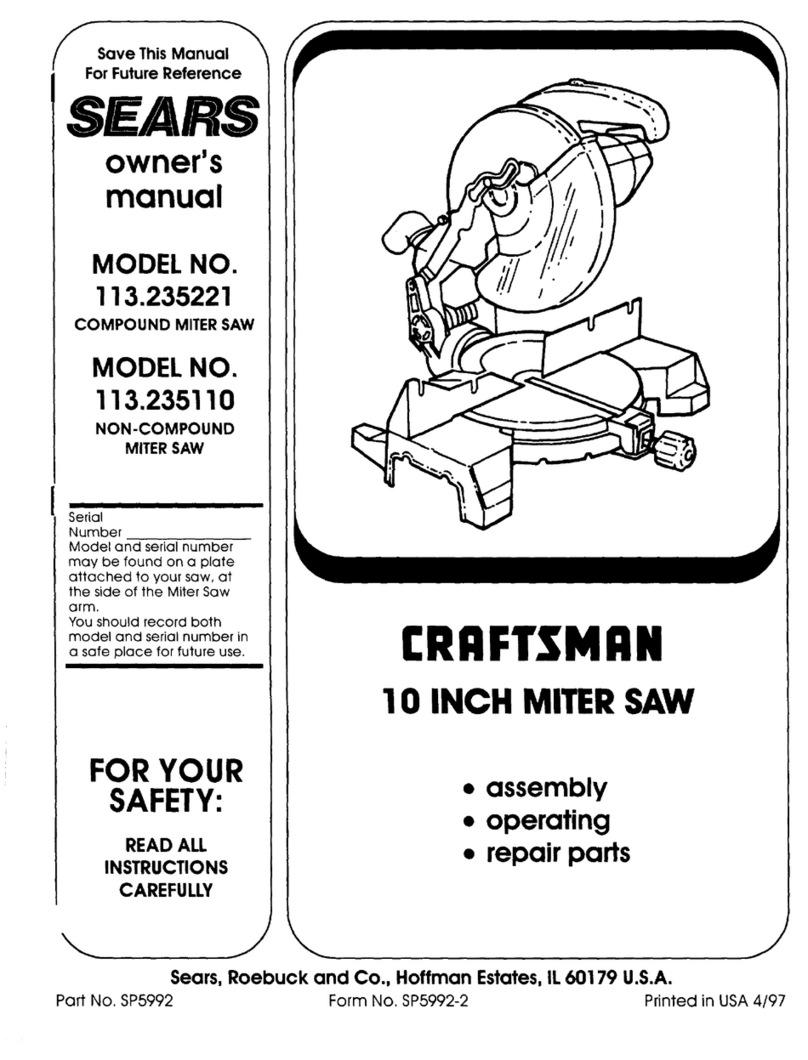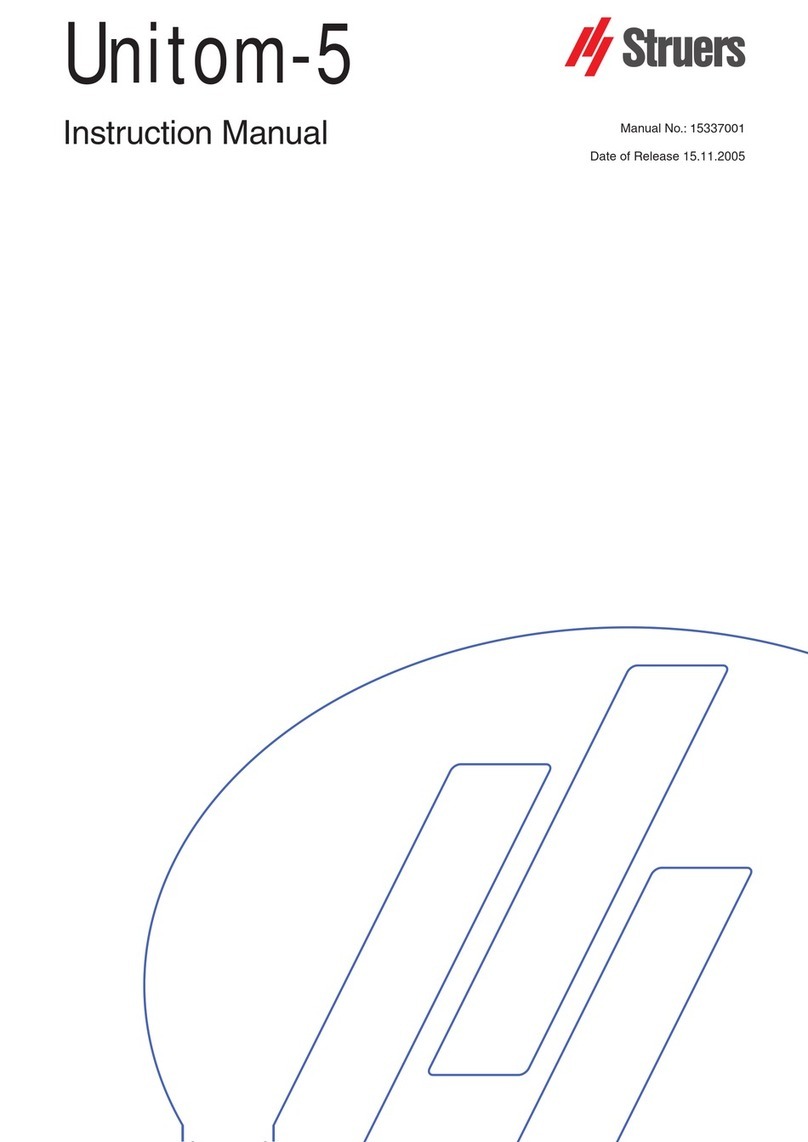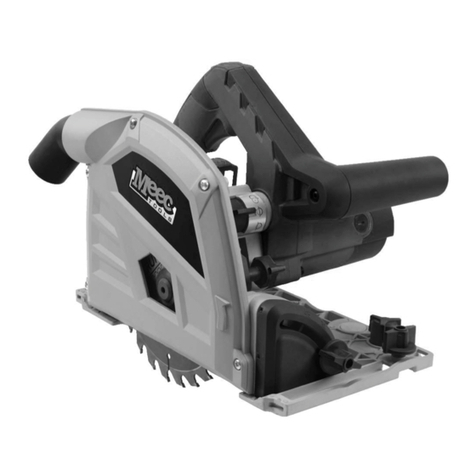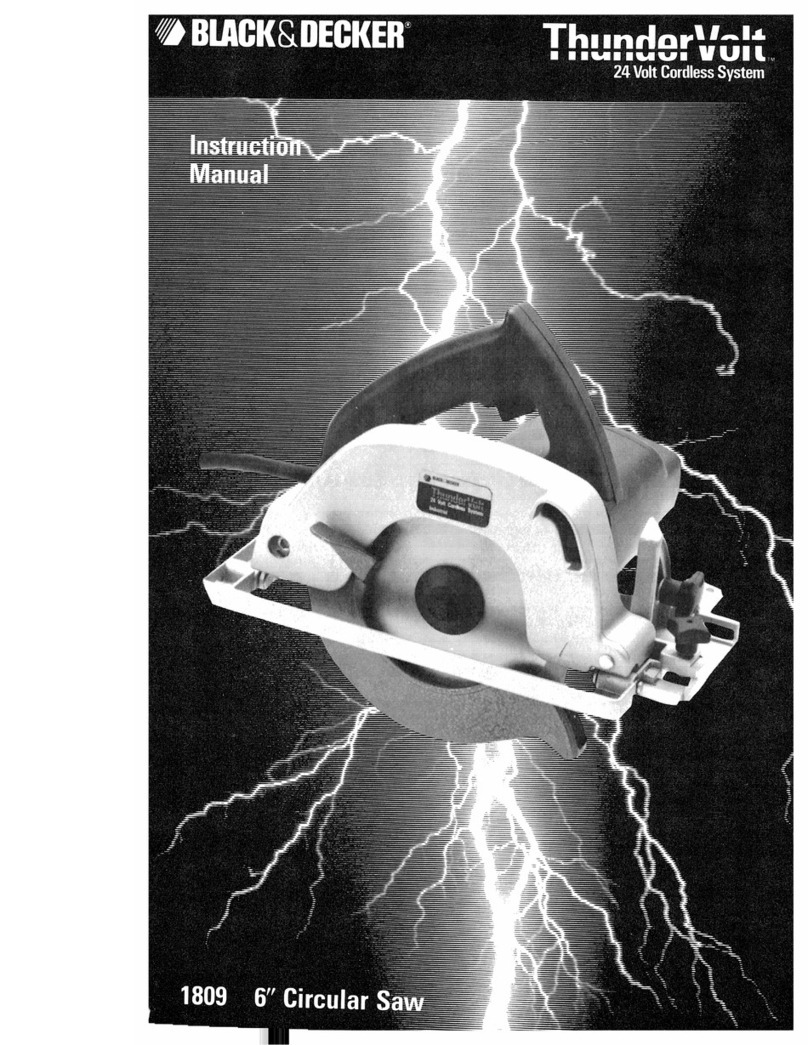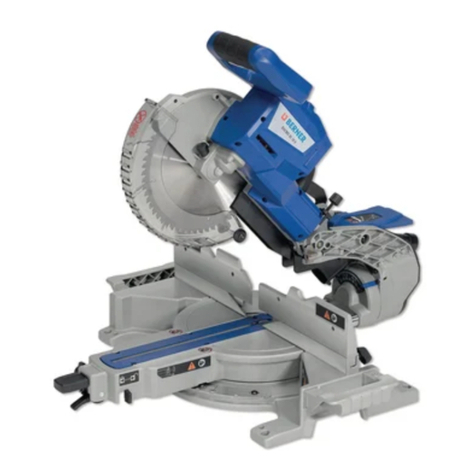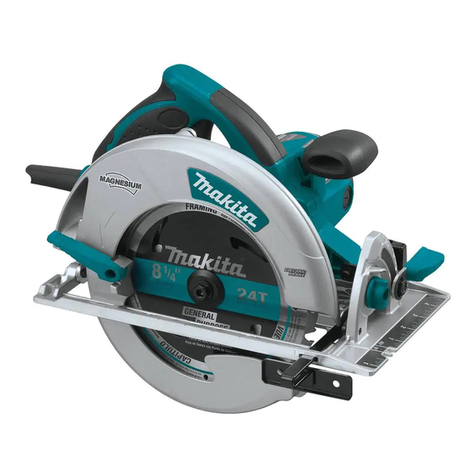Berkel BS+2020T Operating instructions

40
AUTHORIZED DEALER
140514
BONE SAW
OPERATING AND MAINTENANCE MANUAL
BS+2020T
BS+2020F
Van Berkel International S.r.l.
via Ugo Foscolo, 22
21040 Oggiona S. Stefano (VA) - ITALY
T +39 0331 214311
info@berkelinternational.com
www.theberkelworld.com

39
39



36
BS+ 2020T - 2020F
tav. 2
5
EN
TABLE OF CONTENTS
ytnarrawdnayrevileD.1 07
noitcudortnI-1.1
launamehtgnisudnagnirotS-2.1
ytnarraW-3.1
noitpircsedenihcaM-4.1
esudednetnI-5.1
esureporpmI-6.1
sliatedenihcaM-7.1
seciveddnasdraugytefaS-8.1
sngisregnaddnagninraW-9.1
noitatskroW-01.1
snoitidnoclatnemnorivnE-11.1
metsysgnithgiL-21.1
snoitarbiV-
31.1
21scitsiretcarahclacinhceT.2
stnenopmocniaM-1.2
snoitacificepslacinhceT-2.2
2.3 - Maximum dimensions of machined piece
thgiewdnasnoisnemidenihcaM-4.2
2.5 - Noise level
smargaidgniriW-6.2
V004margaidgniriwesahp-3-1.6.2
2.6.2 - Single-phase wiring diagram 230 V
2.6.3 - 3-phase wiring diagram 400 V with mushroom push-button
2.6.4 - Single-phase wiring diagram 230 V with mushroom push-button
3. Testing, transportation, delivery and installation 18
gnitseT-1.3
gnildnahdnayreviledenihcaM-2.3
slairetamdeilppusfotsiL-1.2.3
noitallatsnI-3.3
lasopsidgnigakcaP-1.3.3
gnildnahenihcaM-2.3.3
p
u-koohmetsyslacirtcelE-4.3
3.4.1 - 3-phase machine (400 volt 50/60 Hz) and 3-phase machine
)zH06/05tlov032(
3.4.2 - Single-phase machine (230 volt 50/60 Hz)
tnemtsujdaytilibatS-5.3
02sthgilrotacidnidnaslortnoC.4
4.1 - List of controls and indicators
4.2 - Emergency mushroom push-button (optional)
12potsdnapu-tratS.5
pu-koohlacirtceleehtgnikcehC-1.5
5.2 - Checking safety devices and guards are installed and efficient
pu-tratsenihcaM-3.5
potsenihcaM-4.5

6
32enihcamehtgnisU.6
snoitalugeR-1.6
stnemtsujdayranimilerP-2.6
wasenobehtgnisU-3.6
6.4 - Using the sliding meat grinder surface (optional)
52ecnanetniaM.7
snoitalugeR-1.7
noitcudortnI-2.7
7.3 - Check-up performed at our manufacturing facilities
7.4 - Inspections and checks to be performed when installing
enihcameht
skcehcenituoR-5.7
skcehcderiuqerehtmrofrepotwoH-6.7
tnemtsujdagninoisneT-1.6.7
tnemecalperedalB-2.6.7
7.6.3 - Type of blade
sedalbehtgnildnaH-4.6.7
7.7 - Cleaning the machine
7.1.1 - Overview
7.7.2 - Cleaning the machine
7.8 - Cleaning the blade-guide plug
7.9 - WEEE Waste Electrical and Electronic Equipment
7.10 - tnemecalperstraperapS
33gnitoohselbuorT.8
noitulosdnaesuaC-1.8
sweivdedolpxE.9
43
35
BS+ 2020F
tav. 1

34
9 Exploded views
BS+ 2020T
tav. 1
7
EN
1 Delivery and warranty
1.1 - Introduction
These symbols are meant to draw the attention of the reader to machine parts and
tasks that are dangerous to the operator’s personal safety or that may potentially
cause damage to the machine itself. Do not operate the machine if you are not
sure you have fully understood the cautions the symbols refer to.
For safety reasons, certain illustrations in this manual show the machine or its
parts with the panels or housing disassembled. Do not use the machine in said
conditions, but only if all of its guar ds are assembled and are working.
The manufacturer forbids the reproduction, even if only partial, of this manual, and
its contents cannot be used for purposes not approved of by the manufacturer.
Every violation of this ban will be pursued by legal action.
1.2 - Storing and using the manual
The purpose of this manual is to instruct machine users by way of texts and pic-
tures on the regulations and essential criter ia to follow when transporting, handling,
using and servicing the machine. Therefore, before you use the machine, carefully
read this manual. Store it with care nearby the machine, in a place that is easy and
quick to access, should there be need to consult the manual in the future.
If the manual is lost or ruined, request a copy from your local retailer or contact the
manufacturer. If the machine is transferred to other owner, inform the manufacturer
of the name and contact details of the new owner. The manual reflects the state of
the art at the time the machine was sold on the market and cannot be considered
obsolete if new progress in technology leads to its changing. In this regard, the
manufacturer reserves the right to update its production and annexed manuals
without being required to update its former production and manuals, except in rare
circumstances. If in doubt, contact the customer service center nearest to you or
the manufacturer. The manufacturer is committed to continuously improving its
products. As such, the manufacturer welcomes and encourages any report or sug-
gestion meant to enhance its machines and/or the manual.
The machine has been delivered to the user under warranty cover valid as of the
date of purchase. For clarificat ions, contact your supplier.
1.3 - Warranty
For no reason whatsoever is the user authorized to tamper with the machine.
Where you to encounter flaws or were the machine to malfunction, you are
required to notify the manufacturer at once in all cases. Any and all attempts to
disassemble, modify or, more in general, tamper with any machine component
made by the user or by unauthorized staff will automatically cancel the warranty
cover and will absolve the manufacturer of any liability for harm to individuals or
property caused by such tampering.
The manufacturer likewise rejects any liability in the following cases:
- improper installation;
- improper use of the machine by untrained personnel;
- use of the machine that is in breach of the legislation and standards applicable in
the country where the machine is installed;
- neglectful or poor maintenance;
- use of non-original and generic spare parts;
- failure to partly or whollyfollow the instructions.

8
1.4 - Machine description
The bone saw you have purchased is a safe and reliable machine that is simple to
use. The pulleys are in aluminum while its body and accessories are in stainless
steel type AISI 304. The bone saw has guards installed that are both mechanical
(housing, doors, etc.) and electrical (micro-switch, stop button, etc.), which are
meant to reduce the operator’s exposure to risks during its use to a bare minimum.
The tilting angle of the pulley can be horizontally and vertically adjusted, so as to
always ensure maximum blade adhesion. The engine is ventilated and well-
protected against water and intermittent operation. The control panel is installed in
an easily accessible position and features 24V control buttons. Special care has
been given to facilitate cleaning tasks when designing the machine, thanks in par-
ticular to the following technical measures:
- simple removal of the blade and upper pulley without the need for tools,
- Once the pulley is removed, the machine’s surface is smooth, making it easier to
clean and allowing dirt on the blade to directly deposit in its tray.
- all its electrical parts have been manufactured to provide the minimum safety
standard IP 56.
1.5 - Intended use
The bone saw has been designed and manufactured to cut bone and frozen fresh
meat and fish. Use the bone saw only on top of a table or on the stand supplied by
the manufacturer. Given its use to saw foodstuffs, the materials used to manufac-
ture the blade and all other components that may make contact with the cut prod-
uct have been carefully selected. The bone saw is an industrial appliance and only
skilled professionals should use the machine, after having carefully read this man-
ual. This equipment complies with the essential health and safety requirements of
directive 2006/42 / EC and the requirements of directives 2014/30/EU, 2014/35/
EU, 2006/42/EC, RoHs 2011/65/EU and Regulation 1935/2004/EC. The machine
was designed and built according to the requirements of EN 12268: 2014.
Since it is also suitable to cut frozen fish, the bone saw does not require special
environmental conditions. We nonetheless advi se you to store it away indoors,
protected against bad weather and abrupt temperature changes.
1.6 - Improper use
The bone saw must only be used as instructed by the manufacturer; more specifi-
cally:
- Do not use the machine if has not been correctly installed with all guards intact
and properly assembled, so as to avoid the risk of personal injury.
- Do not use the machine with a worn or unsharpened blade, as it may break.
- Do not climb with your feet onto the machine, even if is off, as this could dam-
age the machine, besides the risk for the operator of falling.
- Do not access the electrical components without having first cut off power to the
machine: danger: risk of electrocution.
- Do not use the machine to cut anything other than meat, bone or fish.
- Do not stop the blade with your hands, but wait for it stop of its own, so as to
avoid the risk of severe personal injury.
- Do not wear rings, wrist-watches, jewelry, loose or draping clothing, like shoes,
neckties, torn apparel, unbuttoned jackets our blouses with an open zipper,
which may get stuck in moving parts. Use approved safety clothing like non-slip
boots, safety goggles, work gloves, ear muffs or plugs, safety mask. Consult the
employer concerning the applicable safety regulations and the required personal
protective equipment.
- Do not start the machine if it is in failure . Before using the machine, make sure
33
EN
8 Troubleshooting
8.1 Problem, cause and solution
Problem
1 - The machine does not start.
2 - The blade does not cut in a straight line.
3 - The blade drops off from its support pulleys.
4 - The blade overheats.
Cause
1 - The differential circuit breaker is in position “0”.
1.1 - The housing that covers the pulleys or the tray to collect bone chips is not
properly closed.
1.2 - The micro-switch installed on the h ousing that covers the pulleys is not
working.
1.3 - The electric motor or the electronic board are in fault.
2 - The blade is worn and no longer cuts.
3 - The upper pulley is misaligned..
3.1 - The blade is not properly fastened.
3.2 - The blade is maladjusted.
4 - Bone chips and food residues stuck near the blade guide.
4.1 - Upper pulley bearings are stuck.
4.2 - The blade is worn and no longer cuts..
Solution
1 - Turn the switch to position “1”.
1.1 - Properly close the housing and/or the tray that protects the pulleys.
1.2 - Contact customer service for assistance.
1.3 - Contact customer service for assistance.
2 - Replace the blade (par. 7.6.2).
3 - The operation must be performed by specialized and authorized staff.
3.1 - Relpace the blade, even if it is new..
3.2 - Contact customer service for assistance.
4 - Get tid of any bone chips or food residue stuck near the blade guide (par. 7.6.4).
4.1 - Relpace the bearings.
4.2 - Replace the bl ade. (par. 7.6.2).

32
7.8. Cleaning the blade-guide plug (Pic. 7.6.6)
At the end of the work shift, clean the blade-guide plug “1”.
- With the machine off, turn the differential circuit breaker to “0”
and slip off the power plug.
- With the machine disconnected from the power grid, open the
housing and thoroughly clean the blade guide “1”, getting rid
of any bone chip or food residue.
- Close back the housing and lock it in place with its closures “2”.
7.10 Spare parts replacement
In case the machine needs to have spare parts installed on it, contact the manu-
facturer, which will send the spare parts catalogue. Do not use non-original spare
parts. Please be reminded that all spare parts must be assembled by specialized
staff.
Pic.7.6.3
TO ALL USERS
Pursuant to art.13 of Leg. Decree of July 25, 2005, no. 151 “Implementation
of Directives 2002/95/CE, 2002/96/CE and 2003/108/CE concering the reduc-
tion of hazardous substances in electrical and electronic equipment, including
waste disposal”
The barred trash-bin symbol displayed on the equip,ment or on the
package indicates that the product must be assigned to separate wa-
ste collection at the end of its life span.
Collection of this equipment as separate waste once it reaches the end
of its life span is organized and managed by the manufacturer. The
user who wishes to scrap this equipment must therefore contact the
manufacturer and follow the system applied by the manufacturer to
separately collect the equipment at the end of its life span.
Collection of the equipment as separate waste to then recylce the decommissioned
equipment and dispose of it iwithout harming the environment contributes to avoid
negative effects on personal health and favors the reuse and/or recycling of the
materials of which the equipment is made of.
Delinquent disposal of the product by its owner/user will entail the application of
administrative fines as established by current legislation.
7.9 - WEEE Waste Electrical and Electronic Equipment
9
EN
that any hazardous and potentially threatening condition has been thoroughly
eliminated. If you notice any abnormal condition, stop the machine and immedi-
ately inform staff in charge of maintenance.
- Do not allow unauthorized personnel to perform tasks on the machine. The
emergency procedure to follow, should the machine operator suffer an accident
involving electrically conductive parts, is to first of all pull the operator away from
the power source (since usually the operator loses consciousness in this type of
accident). In this case, the operator is a live conductor: touching him would
mean suffering electrocution. Proceed to disconnect the contacts from the power
line valve or, if this is not possible, draw the victim away with the aid of insulating
materials (wooden clubs or PVC, fabric, leather, etc.,). It is advisable to immedi-
ately request medical staff to intervene and have the patient hospitalized.
- Do not perform any task on the machine if not duly authorized beforehand.
- Follow the procedures established for maintenance and technical assistance.
1.7 - Machine details
The exact description of the “Model”, “S erial number” and “Year of manufacture” of
the machine will help our customer service staff provide prompt and efficient an-
swers. Whenever you contact our customer service or request spare parts, always
be sure to provide the above information. We recommend that you fill out the form
in picture 1.7.1. below as a reminder, copying the data of your machine on another
sheet of paper.
!! CAUTION !! Do not for any
reason whatsoever change the
information displayed on the label.
1.8 Safety guards and devices
Before you proceed to use the machine, make sure its safety devices are in place
and intact.
Check that they are installed and efficient at the beginning of every work shift. If
they are not, inform the manager in charge of maintenance at once.
1 - Mobile guard installed around blade area.
If there is no piece in the machine, the guard prevents the operator from ac-
cidentally touching the cutting blade. (Picture 1.8.1)
2 - Micro-switch to check housing status (open/closed)
If the housing is open, the micro-switch cuts off electrical power from the
machine, causing it to stop.
Closing the housing allows the machine to resume operation, but the opera-
tor must press the start button again.
A
B C
D E
F G
H
I
L
Fig. 1.7.1
A = machine model
B = power supply
C = motor power
D = motor frequency (Hz)
E = weight
F = Ampere
G = Year of manufacture
H = Serial number
I = Manufacturer
L = Bar code
Bone saw model...................................................
Serial number.......................................................
Year of manufacture............................................
Type ....................................................................

10
Even if the machine accidentally stops, as for in-
stance due to a power outage, if electrical power is
supplied again to the machine, it will not cause the
machine to restart, but the operator will instead
have to press the start button (Picture 1.8.1).
3 Sliding blade protection, it allows the adjustment
of cutting height according to the product thickness
1.9 - Warning and danger signs
Never move your hands close to the blade, especially when it is moving.
There is serious risk of severe personal injury. If the machine is hooked to the
power grid, do not touch its electrical components. Risk of electrocution.
Heed the warnings on the labels. Failure to follow their instructions may
cause personal injuries, even lethal. Make sure that the labels are always in
place and clearly legible. If not, re-apply or replace them.
Fig.1.8.1
2
1 3
Fig.1.9.1
D
G
E
C
B
A
Fig.1.9.2
A B C D
G
F
E
31
EN
7.7.2 - Cleaning the machine
- Wear a pair of gloves that are suitable to handle
sharp objects
- Loosen the blade’s tensioning by loweing gear “1”.
- Grab blade “2” and slip it off the pulley as shown in
Pic. 7.7.2 and Pic. 7.7.3
- Remove all scrapers “9” and wash them with
detergent pH 7.
- After having taken off all the dismountable parts,
you will to clean, using a sponge soaked in
detergent pH 7.
- Rinse all the components so as to get rid of any
left-over detergent and proceed to reassemble them,
repeating the procedure in its reverse order.
Pic. 7.7.1
Pic. 7.7.4
9
Pic 7.7.2 Pic. 7.7.3
2

30
8
With both hands, grab
the blade packet again
and stretch them out
on the table.
9
Now that the blades
are fully loosened, grab
one in the middle and
fold it upwards, making
it slide on the table,
Immediately after this,
grab the two ends and
move them close to the
center; you can now lift
the blade.
10
After having lifted the
blade, spread your
hands apart and then
open the blade. You
can now assemble the
blade on the bone saw.
Fasten and protect the
remaining blades, repea-
ting the proecdure in the
reverse order, starting
from point 8. Do not take
off the gloves until you
have completed the pro-
cedure.
7.7 - Cleaning the machine
7.7.1 - Overview
The machine must be cleaned at least once a day or, if necessary, even more
often.
All the parts of the bone saw must that come into direct or indirect contact with
the cut foodstuff must be thoroughly cleaned.
Do not use water cleaners or water jets to clean the bone saw, but use neutral
detergents instead (pH 7).
Use of any other detergent is forbidden. Do not use tools, brushes and anything
else that can damage the machine’s surface.
Before performing any cleaning task, you must disconnect the machine plug from
the power grid to fully insulate the machine from the rest of the system.
CAUTION: Be careful not to touch sharp and/or pointed parts.
11
EN
1.10 - Work station
The correct position the operator must assume to ideally
control the bone saw is shown in Picture 1.10.1.
1.11 - Environmental conditions
The machine is designed to work in the following environmental conditions:
- minimum room temperature: -5 °C;
- maximum room temperature: +40 °C;
- relative humidity: 50% at 40 °C.
1.12 - Lighting system
The place where the bone saw is installedmust have enough natural and artificial
light, as required by the standards applicable in the Country of installation.
The lighting system must be compatible with the current norms of law and must not
induce dangerous reflections. It must allow the operator to clearly read the control
panel signals and identify the emergency buttons.
1.13 - Vibrations
The machine does not transmit significant vibration (such to advise particular cau-
tion) to the counter/table.
Fig.1.10.1

12
2 - Technical characteristics
2.1 - Main components
In order to help the operator understand the contents of this manual, Picture 2.1.1
below lists and depicts the main components of the machine.
1 - Pulleys protection casing in stainless steel AISI 304
2 - Control panel.
3 - Portioning device in stainless steel AISI 304
4 - Pusher in stainless steel AISI 304
5 - Work top in stainless steel AISI 304
6 - Electrical motor.
7 - Upper driven pulley in polished aluminium G-AlMg3
8 - Telescopic blade protection are made of stainless steel AISI 304
9 - Dirt and rest collection tray ar e made of stainless steel AISI 304
10 - Lower drive pulley polished aluminium G-AlMg3
11 - Electrical system.
12 - Body machine are made of stainless steel AISI 304
13 - Lever for the assembly blade.
14 - Alimentary plastic blade scraper
15 - Blade guide insert in hardened steel
16 - Band cutting blade in carbon steel C95
2.2 - Technical data
MOTOR PULLEY BLADE LENGTH WORKBENCH
Hp / rpm mm mm mm
1,5 250 2020 475 x 490
Fig.2.1.1
1
7
3
9 10
4
5
2
6
13
12
11
14
8
16
15
29
EN
3
Grab the blade packet
with one hand protect-
ed by the glove, as
shown in the picture to
the right...
4
… and with the other
hand, also protected by
a glove, loosen the
clamp that fastens the
blades, until it comes
off.
5
Grab the blade packet
with both hands and
open it apart until the
blades are fully stret-
ched. .
6 Grab the blade again
with one hand….
7
…and with the other
hand, loosen and slip
the other clamp off too.

28
- Assemble the new blade.
- Tension the blade by turning the gear to position “A” (Picture 7.6.1).
- Check the position of the blade on the two pulleys:
the blade must lay on the two pulleys, except for the sharpened segment, which
must stick out from the pulleys (Picture 7.6.3).
Turn the two pulleys manually and check that the blade is properly positioned.
- Close the housing “1” and lock it in place with closure “3”
- Connect the electrical plug back into its socket.
- Turn the differential circuit breaker back to “1”.
- Start and stop the machine and check whether the blade
stays in its proper position compared to the pulleys.
7.6.3 Type of blades
There are several types of blades available on the market
that differ in terms of tooth spacing, blade thickness,
height and type of steel.
We recommend that you use blades in tempered
steel, 16 mm high and with teeth spaced apart by 7
mm on our bone saws.
For special applications, such as poultry or frozen
meat, there are specific blades with different tooth spacing that offer a perfect cut
without chips and without
altering the product.
Blade unfolding mm 2020
Blade width mm 16
Material AISI 420
Pic. 7.6.3
Blade
Pulley
7.6.4 - Blade handling
HOW TO OPEN A BLADE OF THE BONE SAW WITHOUT CUTTING YOURSELF
Perform the following procedure in the order indicated by the numbers
1
Wear a pair of gloves
that are suitable to
handle sharp objects.
2
Pul out the blade pac-
ket from the the box
they are packaged in
and lay it on a surface
with the blade teethfa-
cing down.
13
EN
2.3 - Maximum dimensions of cut piece (Picture 2.3.1)
2.4 - Machine dimensions and weight
2.5 - Noise level
The noise level of this machine results to be 73 dB.
We recommend that the operator utilises ear defenders when operating the bone
saw.
Maximum height
Maximum width
Pic. 2.3.1
A B C D E F G H L Net weight
mm mm mm mm mm mm mm mm mm kg
BS+ 2020T 253 346 568 560 710 930 103 290 236 61
BS+ 2020F 467 411 568 603 710 930 165 290 236 70
M
mm
363
980
BS+ 2020FBS+ 2020T
Fig. 2.4.1

14
2.6 - Wiring diagrams
2.6.1 - 3-phase wiring diagram (400V)
Fig.2.6.1
27
EN
CAUTION! If the braking time exceeds 4 seconds or in the case of a fault, contact
customer service for assistance.
At the end of every work shift:
- Thoroughly clean the machine, getting rid of any bone chip or food residues.
- Slip off, clean and reassemble the blade guides.
7.6 - How to perform the required checks
7.6.1 - Adjusting blade tensioning (Pic. 7.6.1)
The blades are mechanically tensioned inside the bone saw by working gear “1”,
With the gear in position “1” (Pic. 7.6.1) , the blade is tensioned.
To disengage the blade, pull the gear down to position “B”.
CAUTION! Given how delicate and dangerous this operation is, it must only be
performed by qualified staff that has beenexplicitly authorized for its performance.
7.6.2 - Replacing the blade (Pic. 7.6.2)
- Turn the differential circuit breaker installed upstream of the machine to position
“0” and disconnect the plug.
- Open housing “1” by turning closure “3”.
- Pull gear “2” downward, as shown in Picture 7.6.2 by arrows “B”.
- Next, slip off the blades from the pulleys.
- Before you assemble the new blade, clean the pulleys and blade cleaner plug first.
Whenever you need to replace the blade, we recommend that you also disas-
semble the upper pulley and thoroughly clean the machine.
With the pulleys disassembled, check t he condition of the air-tight bearings.
If they emit noise, replace them.
Pic 7.6.1
Pic. 7.6.2
1
3

26
7.3 - Check-up performed at our manufacturing facilities
The machine you have purchased has been tested by the manufacturer to ensure
its proper commissioning and the due adjustments.
More specifically, the checks performed by the manufacturer include:
Prior to co mmissioning:
- Check that the operating vo ltage of the machine is in line with the customer’s
requirements.
- Check that all the warning and danger labels and the rating plate with the tech-
nical specifications and serial number are installed.
- Check that all nuts and bolts are firmly tightened.
- Check of cutting blade tension.
- Check that the machine is compliant with the applicable standards and that it
corresponds to the contents of this manual.
With the machine running
- Check of efficiency of safety guards and devices: if the door is opened by a mini-
mum of 8 mm, the machine must stop.
- Check of correct alignment of blade towing pulleys.
- General check of machine operation.
- Repeated cutting tests with the aim of checking the machine’s proper manufac-
ture, based on the type of sawing work it is designed to perform.
- Check that the tool of the machine has a brake halt of max. 4 seconds. If the ma-
chine does not slow down at the speed indicated in the manual or rating plate,
contact customer service.
7.4 - Inspections and checks to be performed when installing the machine
To make sure that the machine has not been damaged during its transportation or
installation, diligently perform the checks listed below:
Prior to commissioning:
- Check that the power voltage matches the value displayed on the machine’s rat-
ing plate.
- Check that the warning and danger labels are in place and intact.
- Check that the blade is properly tensioned.
Checks with the machine running:
- Check the efficiency of the safety guards and devices, as transportation may
have damaged or maladjusted them.
- Check that the cutting blade is properly aligned.
- Perform a series of cutting tests with pieces of the same dimensions of the food-
stuff you will then saw with the machine.
7.5 - Routine checks
In order to maintain the machine’s features and reliability consistent over time, you
must perform routine checks with the frequency listed below, in addition to those
described hitherto:
Before starting every work shift:
- Check that the safety devices are working properly.
- Check blade condition. If it is blunt or broken, replace it.
- Check that the blades brake and halt after 4 seconds.
- Check blade tensioning.
- Check that the blades are aligned with the pulleys.
15
EN
2.6.2 - Single-phase wiring diagram (230 V)
Fig. 2.6.2

16
2.6.3 -3-phase wiring diagram (400V) with mushroom push-button
Fig. 2.6.3
25
EN
Chopping off
sirloin steak tips
Adjust the blade guard, leaving only the segment
that you need to cut the piece exposed. Turn the
machine on and push the sirloin steak against the
blade, keeping your hands at a safe distance from
the blade.
KAETSNIOLRIS
Cutting the front
or back in two
Adjust the blade guard, leaving only the segment
that you need to cut the piece exposed. Turn the
machine on and push the piece against the blade,
keeping your hands at a safe distance from the
blade.
BMAL
7 Maintenance
7.1 - Guidelines
All service and cleaning tasks on the bone saw must only be performed with the
machine stopped and disconnected from the power grid.
The area in which maintenance is performed on the machine must always be kept
clean and dry.
CAUTION!!
Do not allow unauthorized staff to perform tasks on the machine.
Do not stick your body, limbs or fingers in articulate and sharp openings without
wearing suitable protective apparel (gloves, goggles, etc.).
Do not use gasoline, solvents or other flammable liquids as detergents; use au-
thorized commercial solvents instead that are non-toxic and non-flammable.
Do not use compressed air to clean the machine.
In case you absolutely must use compressed air, use goggles to protect your eyes
that have side covers and limit its pressure to a maximum of 2 atm (1.9 bar).
Do not use loose flames for lighting when inspecting and servicing the machine.
Do not lubricate the machine when it is moving.
7.2 - Introduction
Efficient maintenance and proper machine use are indispensable requisites to en-
sure the bone saw’s performance and safety.
For the machine to continue to regularly work and avoid cancellation of the warran-
ty, all components must be exclusively replaced with original spare parts.
IT

24
TYPE OF
FOOD SAWING
SAFETY INSTRUCTIONS CUT PRODUCT
Cutting the
ossobuco in
slices
Adjust the blade guard, leaving only the segment
that you need to cut the veal shank exposed. Turn
the machine on and saw the knee, keeping your
hands far from the blade. Proceed then to cut the
“big leg” into slices, us ing the thickness regulator
and the bone pusher or the bone pusher alone,
being careful to keep the blade at safe distance
from the hand you are hoding the piece with. When
this is not possible, scrap the last piece. OSSOBUCO
(SLICEDVEAL SHANK)
Central division
of chops and
slicing them into
smaller pieces
Adjust the blade guard, leaving only the segment
that you need to cut the veal shank exposed. Turn
the machine on and push the piece against the
blade, keeping your hands away from the tool. Take
up the cut pieces and overlap them, then resume
cutting the overlapped pieces, being careful to keep
your hands at a safe distance from the blade.
KROP(ANAICCITSOR
RIB CHOPS)
Cutting hoofs
into pieces
To cut this piece, you must use the bone pusher
device. Turn on the machine and first clean the
ends, then proceed to cut the hoofs, holding the
piece with the free hand that you are not using to
hold the pusher. When this is not possible, scrap
the last piece. Always keep your hand at a safe
distance from the blade.
SFOOH
Cutting the
boiled in large
pieces
Adjust the blade guard, leaving only the segment
that you need to cut the piece exposed. Turn the
machine on and push the boiled meat against the
blade, keeping your hands at a safe distance from
the blade.
HTIWTAEMDELIOB
BONE
Cutting the thigh
-bone into
pieces
To cut this piece, you must use the bone pusher
device. Turn the machine on and first cut the
heads of the thigh-bone and then the bone down
its length. Cut the piece holding it still wtih the free
hand, while the other hand is busy holding the
bone pusher. When this is not possible, scrap the
piece. Always keep your hands at a safe distance
from the blade.
)HGIHT(ENOBREETS
17
EN
2.6.4 - single-phase wiring diagram (230V) with mushroom push-button
Fig. 2.6.4
IT

18
3 Testing, transportation, delivery and installation
3.1 - Testing
The machine you have purchased has been tested at our facilities to ensure that it
works properly and is properly adjusted. Trial sawing drills have also been per-
formed as part of the tests, on the same type of material for which the machine is
normally used to cut.
3.2 - Machine delivery and handling
All the shipped materials have been accurately checked before they were handed
over to the courier.
Unless otherwise agreed with the customer or
in the event of especially costly transporta-
tion, the machine is packaged on a wooden
pallet protected by strapped cardboard. The
dimensions of the packing are shown in Pic-
ture 3.2.1.
Check that the packing is intact when you first
receive the machine.
If the packing happens to be torn or in any
way damaged, sign the delivery note includ-
ing the wording: “accepted with reserv ations” and the reason for the note.
Once you have opened the package, if certain machine components display evi-
dent damage, notify the courier thereof within three days from the date on the de-
livery note.
3.2.1 - List of supplied materials
A User and Service Manual is included with the machine in the package (this docu-
ment and its enclosures).
3.3 - Installation
CAUTION
The place where the machine is installed must be horizontal, solid and must be
laid on a surface that can safely support its weight.
C
A
B
Pic. 3.2.1 A B C Gross weight
mm mm mm kg
BS+ 2020T 253 346 568 61
BS+ 2020F 467 411 568 70
23
EN
6 Using the bone saw
6.1 - Regulations
CAUTION Only authorized staff can operate the machine.
Before using the bone saw, the operator must check that all its guards are in place
and that the safety devices are installed and efficient. If they are not, turn the
machine off and contact staff in charge of maintenance. Have maneuvers with the f
machine empty only performed with the aid of specialized personnel, in order to
familiarize with the machine enough to use it safely.
6.2 - Preiliminary adjustmets (Pic. 6.2.1)
Scoop “2” must be adjusted based on the size of the
cut product.
- To adjust scoop “2”, loosen knob “1”, then move the
scoop to the desired distance from the cutting
blade, which will define the cutting width.
- Tiighten knob “1”.
- adjust the sliding blade protection (3) according to
the height of the piece to be cut, so as to leave
uncovered only the part of the blade involved in the
cutting.
6.3 - Using the bone saw
Perform the adjustments as described in par. 6.2.
The machine is now ready for use.
- Lay the piece you intend to cut “3” on the workbench, up
against scoop “1”
- Start the machine
- Using one hand, grab the pusher knob “2” and with the
other hand, guide the product while pushing it toward the
blade to cut it. When you have reached the last slice,
push the product toward the blade, using only pusher “2”,
without guiding the product with your hands.
IT IS FORBIDDEN TO SAW PRODUCTS THAN ARE SMALLER THAN 50 mm
6.4 Using the sliding surface of the meat grinder (optional)
The manufacturer can on request supply a stainless steel AISI 304 sliding surface
“2” to install on the fixed surface, which is very useful to cut meat.
By laying the piece of meat on the sliding surface and pushing toward the blade
with the aid of side board “1” (Picture 6.4. 1), you will considerably reduce the pres-
sure exerted by the meat on the workbench.
This will facilitate meat cutting tasks and
ensures the operator’s safety. If you wish to
use the sliding surface, simply turn it over.
1 2
3
Pic.6.3.1
Pic.6.4.1
2
1 Fig. 6.2.1
3

22
A - Checking efficiency of micro-switch “4” (Pic. 5.2.1)
With the machine hooked to the power grid with the blade running, work on the
spring-return closure “2”, thereby unlocking housing “1”. This operation is meant to
stop the machine, in order to prevent obj ects or hands from making contact, even
accidentally, with the moving pulleys and blades. Close back housing “1” and lock
it in place with lock “2”, The machine must not resume running simply by closing
the housing, but only if the star t button is also pressed again
If you experience any kind of abnormal condition, turn the machine off and contact
customer service for technical assistance.
B - Mobile guard on blade “3” (Pic. 5.2.1)
Make sure that pusher “3”, which protects the operator from making contact with
the blade, is installed, intact and properly positioned.
Check that the mobile guard always return s to its upright position if allowed to
drop.
5.3 - Machine start-up (Pic. 5.3.1)
Turn the differential circuit breaker of the machine
from “0” to “1”. The indicator light “2” that signals the
machine is under live voltage must go on.
Press start button “1”, thereby activating blade rota-
tion.
5.4 - Machine stop (Pic 5.3.1)
To stop the machine, press button “3” (the electric
motor will stop).
Indicator light “2” is still on to indicate that the
electrical panel is still powered. Therefore, turn the
differential circuit breaker upstream of the machine to
“0”, thereby cutting off its power supply.
Note:
Whenever you end a work shift and plan to leave to
leave the machine in standby, the differential circuit
breaker must be left in position “0”.
2
3
1
Pic.5.3.1
19
EN
Moreover, be sure to leave a wide space around the machine when laying it onto
the surface, considering the dimensions indicated in Picture 2.4.1. The space will
help operators to perform maneuvers more easily and will facilitate access to the
machine for service tasks.
Provide suitable lighting around the ma chine for operators who use the bone saw
to have clear sight of the machine and its surrounding
space.
The packing must be handled with the aid of a forklift or
other similar machinery, since the machine is supplied on a
pallet protected with cardboard (Pic. 3.2.1).
- Remove the 2 straps that hol d the cardboard fastened to
the pallet.
- Remove the two straps that hold the bone saw fastened
to the pallet.
- Remove the cellophane wrapped around the machine and
all other packaging material.
- BS+ 2020T - Two people are at least
necessary to move the machine
and they have to catch it from
working surface (Fig. 3.3.2)
- BS+ 2020F - Handle the machine
with the aid of forklift or other
mechanical machinery normally
used for handling, as the machine
weighs 100 kg.
Never manually hand the machine.
3.3.1 - Packing disposal
The components inside the packing, such as cardboard,
nylon and wood can be likened to solid urban waste; as
such, they can be freely disposed of.
If the machine is delivered to Countries that have special
laws, dispose of the packing as prescribed by said norms.
3.3.2 - Machine handling
Use a forklift that can carry the mach ine’s weight to lift the machine.
Check that the load is stably positioned on the forks, especially when traveling on
bumpy, slippery or slanted road. When hand ling the machine, keep the load as low
as possible, so as to ensure greater stability and a clear view.
Space the forks apart to stabilize load grip as best as possible.
3.4 - Electrical system hook-up
- Connect the 16 ampere plug supplied by the manufacturer to the power cable.
Make sure that its voltage matches the value displayed on the machine’s rating
plate
All work on the electrical system of the machine must be carried out by specialized
staff duly authorized for its performance by the manager in charge.
Hook the machine to a power grid that has an efficient earthing connection.
Pic. 3.2.1

20
3.4.1- 3-phase machine (400 Volt-50Hz) and 3-phase machine (220 Volt-50 Hz)
These machine versions include a power cable
with a diameter of 4 x 1 mm.
The power cable is plugged into a quadripolar
3-phase socket. Hook the cable to the 3-phase
power grid, interposing a 16 ampere dierential
circuit breaker.
3.4.2 - Single-phase machine (230 Volt-50 Hz)
This machine version includes a powr cable with a diameter of 3 x
1.5 mm. This power cable is pulgged into a tripolar single-phase
socket. Hook the cable to a single-phase 230 Volt-50 Hz power grid, interposing a
16 ampere differential circuit breaker.
For machine versions configured with a different
voltage, contact the manufacturer for instruc-
tions. If there is need to extend the power cable,
use a cable with the same diameter as the one
installed by the manufacturer. To check that the
machine has been properly hooked to the electrical system, see par.
5.1. If you must move the machine elseqhere, be sure to always
disconnect it from the electrical panel, so as to avoid damaging the
power cable.
3.5 - Adjusting machine stability
The machine footpegs can be adjusted in order to stabilize
the machine, by either tightening or loosening them.
4 Controls and indicator lights
4.1 - List of controls and indicators
1 - Start button
- Press this button to start the blades running.
2 - Machine running indicator light
- The light goes on to signal that the machine is
running; it goes on when the operator presses the
start button.
3 - Stop button
- Press this button to stop the motor that controls
motion of the cutting blade.
3
1
2 1 3
Pic .4.1.1
21
EN
4.2 Emergency mushroom push-button (optional)
- Press this button to stop the motor that controls
motion of the cutting blade. To restart the machine,
turn the button head counter-clockwise until you
hear a clicking sound. Engaging the button does not
of itself allow the operator to restart the machine;
the start button must be pressed (ref. 2 in previous
paragraph).
5 Start-up and stop
5.1 Checking the electrical connection
- Turn the differential circuit breaker installed upstream
of the machine to position “I”.
- The indicator light “2” must be on.
- Press start button “1” and stop button “3” right after it in
sequence, checking the direction of blade rotation.
The blade must rotate in the direction pointed to by
arrow “4” in Picture 5.1.1, i.e. toward the workbench.
If the blade is rotating in opposite direction, switch the circuit
breaker off by turning it to “0”. This will cut off power supply to
the machine.
Invert a power wire in the plug and repeat the above proce-
dure to check the electrical connection (par. 5.1).
Note:
In machines hooked to a single-phase line and accordingly configured, the direc-
tion of blade rotation is directly established by the manufacturer.
5.2 Checking the safety guards and devices are installed and efficient
Pic. 5.1.1
4
1
2
3
Pic. 5.2.1
2
3
1
This manual suits for next models
1
Table of contents
Popular Saw manuals by other brands
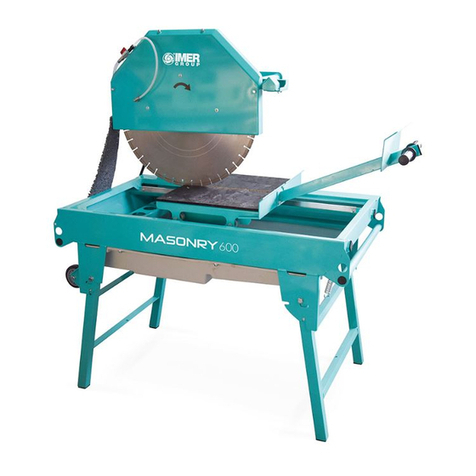
IMER
IMER MASONRY 600 Operating, maintenance, spare parts manual

Hegner
Hegner Unimax user manual
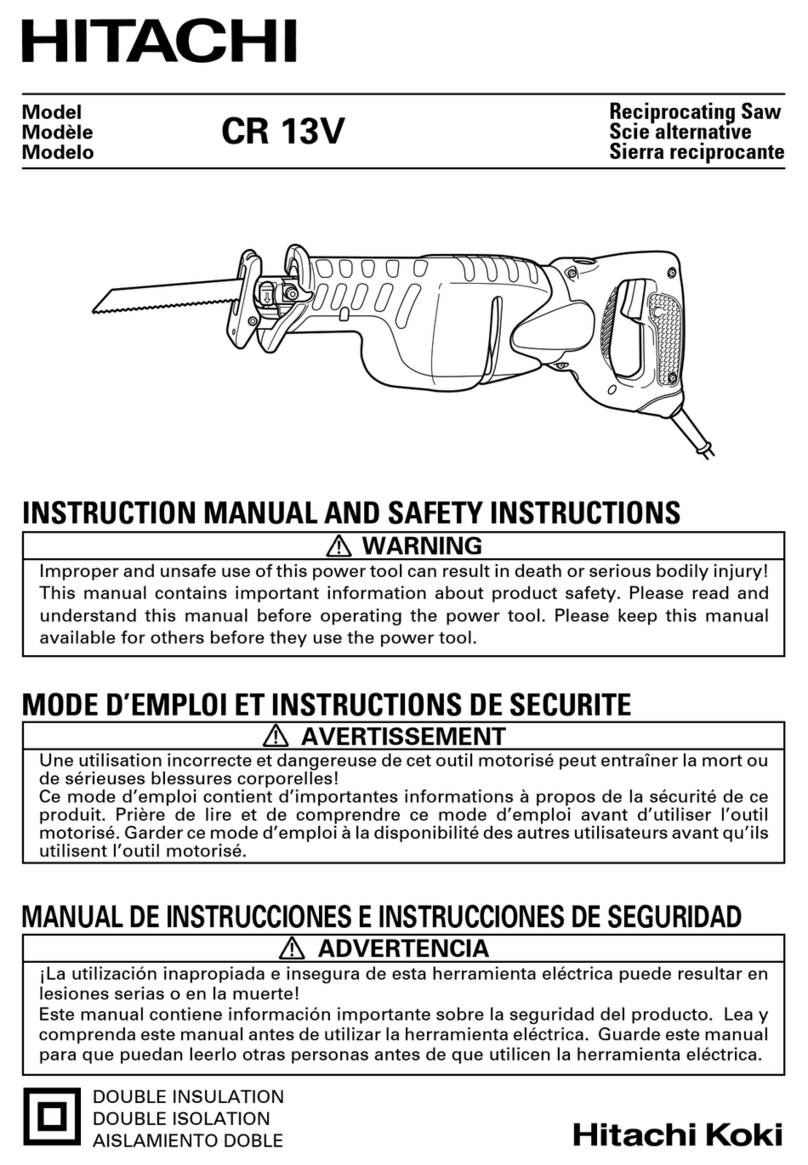
Hitachi
Hitachi CR 13V Instruction manual and safety instructions

Femi
Femi 2201 SPECIAL Instructions for use and maintenance
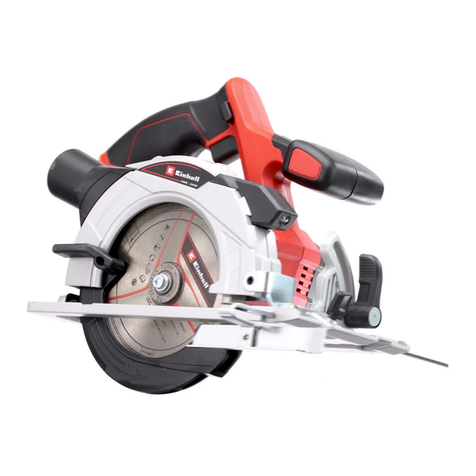
EINHELL
EINHELL TC-CS 18 Li Original operating instructions
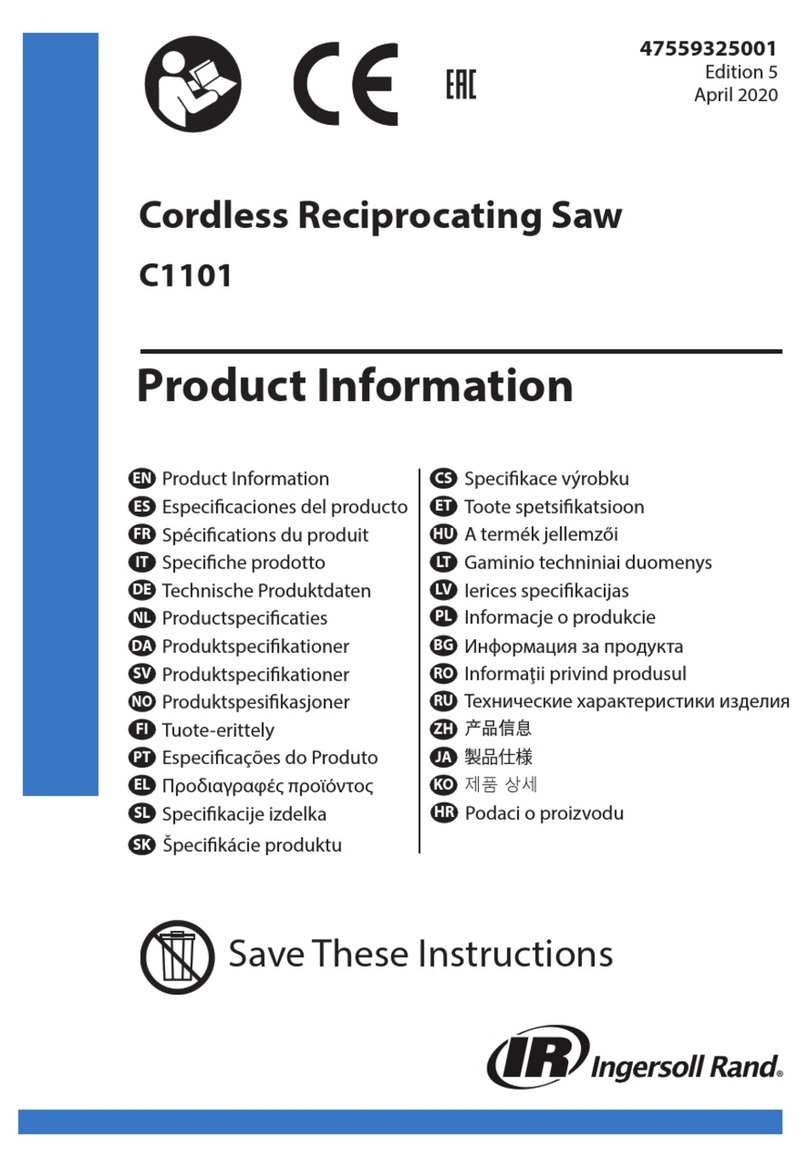
Ingersoll-Rand
Ingersoll-Rand C1512 Additional product Information
